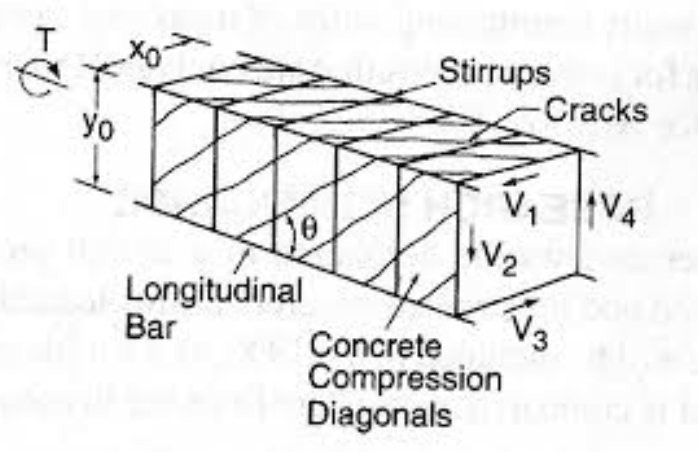Baffled Engineer
Structural
- Jul 27, 2018
- 62
I have a 10"x24" concrete grade beam with 10M stirrups @ 14" o/c, 2-20M bars T&B, 1-1/2" clear cover.
My loading includes strong and weak axis shear plus a torsional load, and I need to have the minimum stirrup for capacity and my Tf>0.25Tcr.
According to C11.3.8.1. the max spacing for stirrups is 0.7dv or 600mm, and in C11.3.8.3 if Tf>0.25Tcr, this minimum spacing shall be reduced by 1/2.
My question is which dv do I use? Will it be the shear depth of the weak axis (dv=7.2")? It would make the maximum stirrup spacing allowed to be 2-1/2" o/c which seems overkill. If I use the dv for strong axis (dv=20") the max stirrup would be 7" o/c.
I do require the stirrup reinforcement for the strong axis since the Vf exceeds Vc in strong axis, but my weak axis shear is smaller than Vc for weak axis and won't theoretically require stirrup reinforcement. Should I be using a dv value of between 7.2" and 20" since there's an interaction between the two shear force vectors?
My loading includes strong and weak axis shear plus a torsional load, and I need to have the minimum stirrup for capacity and my Tf>0.25Tcr.
According to C11.3.8.1. the max spacing for stirrups is 0.7dv or 600mm, and in C11.3.8.3 if Tf>0.25Tcr, this minimum spacing shall be reduced by 1/2.
My question is which dv do I use? Will it be the shear depth of the weak axis (dv=7.2")? It would make the maximum stirrup spacing allowed to be 2-1/2" o/c which seems overkill. If I use the dv for strong axis (dv=20") the max stirrup would be 7" o/c.
I do require the stirrup reinforcement for the strong axis since the Vf exceeds Vc in strong axis, but my weak axis shear is smaller than Vc for weak axis and won't theoretically require stirrup reinforcement. Should I be using a dv value of between 7.2" and 20" since there's an interaction between the two shear force vectors?

